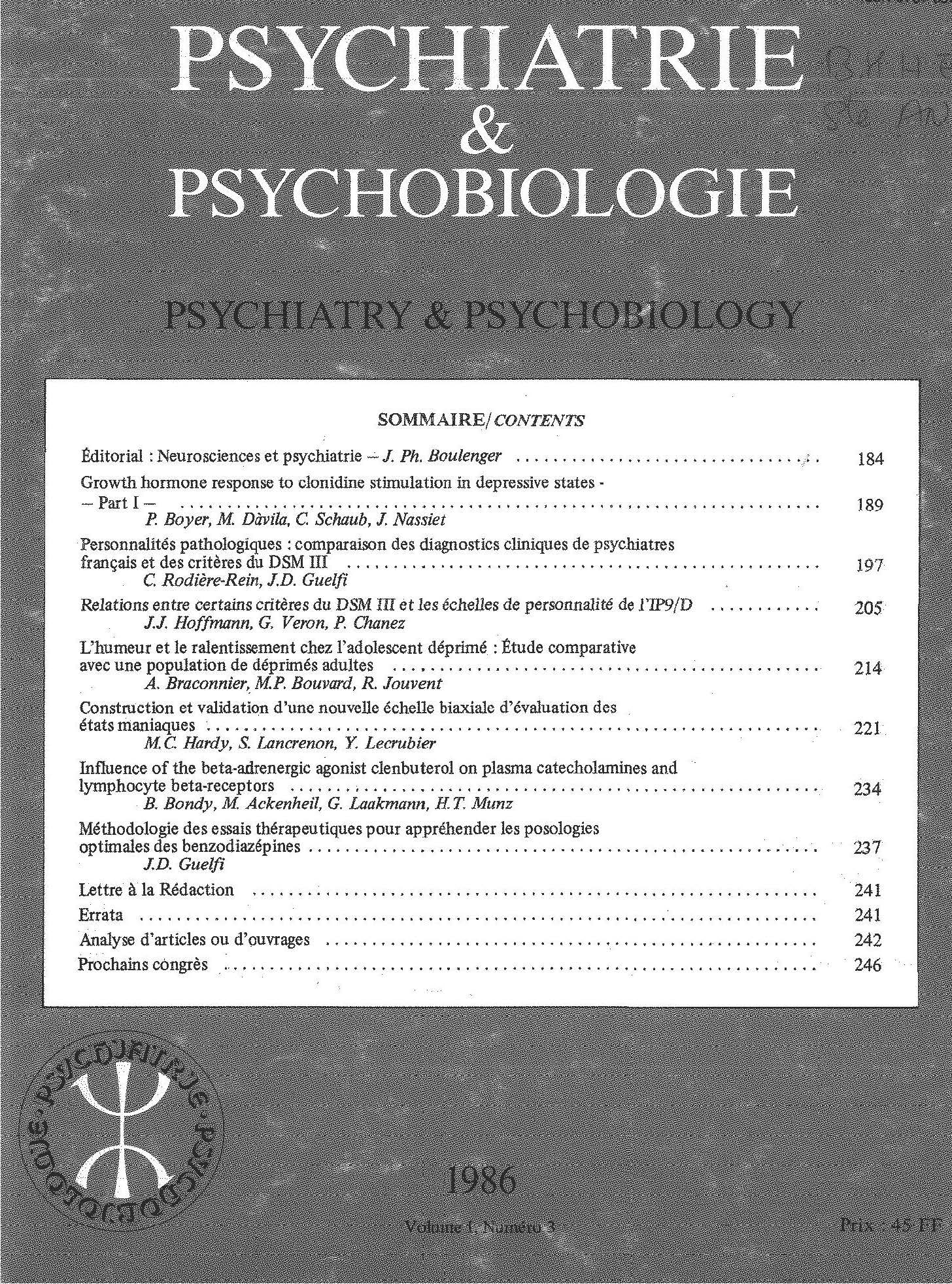No CrossRef data available.
Article contents
A behavioral typology of hypertensive out-patients followed up in general practice
Published online by Cambridge University Press: 28 April 2020
Summary
2275 hypertensive patients consulting their usual general practitioner were analyzed using a specifically designed questionnaire. Sixty-two percent of the subjects were already treated and 38% were untreated prior to inclusion in the study. The data, collected during the usual medical consultation, included several questions answered by the physician concerning the patient's psychological status as well as a series of behavioural scales. The aim of this study was to describe a small number of different and homogeneous psychological patterns rather than a unique profile of hypertensive out-patients. Four types were thus defined using a statistical clustering procedure and were designated as ‘everything is OK”, “hyper-reactive”, “depressed”, and “dynamic-competitive”, representing respectively 43%, 33%, 10% and 14% of the population studied. The first type consists of patients who do not express subjective complaints and claim to have no conflicts, but who have difficulty adjusting to environmental changes. The second type is characterized by emotionally unstable individuals who are easily overwhelmed by their difficulties. The third type corresponds to pessimistic subjects, still affected by previous painful life events. Finally, the fourth type, close to coronary-prone type A behaviour, is composed of subjects whose aggression is channelled into social competition. The distribution of hypertensives amongst these 4 types is the same whether previously treated or not. Under treatment throughout the 6 months’ follow-up, the evolution of mean systolic blood pressure (SUP) and of mean diastolic blood pressure (DBP) was similar in the 4 types, although the second type showed the highest SBP during this period. Second and third type subjects more frequently reported the classical symptoms of hypertension. First and third type subjects reported more side-effects with antihypertensive treatment. Each type's vulnerability to stress is discussed from a psychosomatic viewpoint of essential hypertension. This study provides evidence that several behavioural patterns can be described amongst hypertensive patients. Knowledge of these patterns may be very useful in clinical practice to manage the Patient-physician relationship, and to increase patient compliance with antihypertensive therapy.
Résumé
2275 dossiers d'hypertendus suivis par leur médecin généraliste ont été analysés à l'aide d'un questionnaire élaboré à cet effet. 62% des sujets avaient déjà éié traités avant leur inclusion dans l'étude et 38% ne l'avaient jamais été. Les données recueillies au cours des consultations médicales habituelles comprenaient plusieurs questions, auxquelles devaient répondre les généralistes, sur l'équilibre psychologique des patients ainsi qu ’une série d'échelles comportementales. Le but de cette étude était de décrire un petit nombre de profils psychologiques, homogènes et différents les uns des autres, plutôt qu ’un profit unique, chez des hypertendus suivis en ambulatoire. Quatre « types » ont pu être ainsi définis grâce à une procédure de typologie canonique, et ont été désignés par les termes: «tout-va-bien», «hyper-réactif», «dépressif» et «dynamique-adapté», représentant respectivement 43%, 33%, 10% et 14% de la population étudiée. Le premier type est constitué par des patients qui n’expriment pas de plaintes subjectives et disent ne pas avoir de conflits mais paraissent peu adaplables aux changements de situation. Le deuxièine type est caractérisé par des individus instables émotionnellement et facilement débordés par leurs difficultés. Le troisième type correspond à des sujets pessimistes, marqués par des événemenis vitaux éprouvants. Enfin le qualrième type, proche du «type A» coronarogène, est composé de sujets dont l'agressivité est canalisée dans la compétition sociale. La répartition entre ces quatre types est la même pour des hypertendus déjà traités ou jamais traités. L'évolution de la presssion artérielle systolique moyenne (PAS) et de la pression artérielle diastolique moyenne est comparable dans les quatre types tout au long des six mois de suivi, bien que le second type présente la PAS la plus élevée pendant toute cette période. Les patients appartenant au second ou au troisième type rapportent plus fréquemment les signes fonctionnels classiques de l'hypertension artérielle. Une plus grande fréquence d'effets secondaires du traitement anti-hypertenseur sont relevés au sein du premier et du troisième type. La vulnérabilité psychologique de chacun de ces types face au stress est discutée dans une perspective psychosomatique de l’hypertension artérielle. Cette étude démontre que l’on pent décrire plusieurs profils comportementaux chez des patients hypertendus: leur connaissance peut s'avérer d'une grande utilité en médecine praticienne pour le maniement de la relation médecin-malade et pour améliorer l'observance d'un traitement anti-hypertenseur.
Keywords
- Type
- Original article
- Information
- Copyright
- Copyright © European Psychiatric Association 1989



Comments
No Comments have been published for this article.